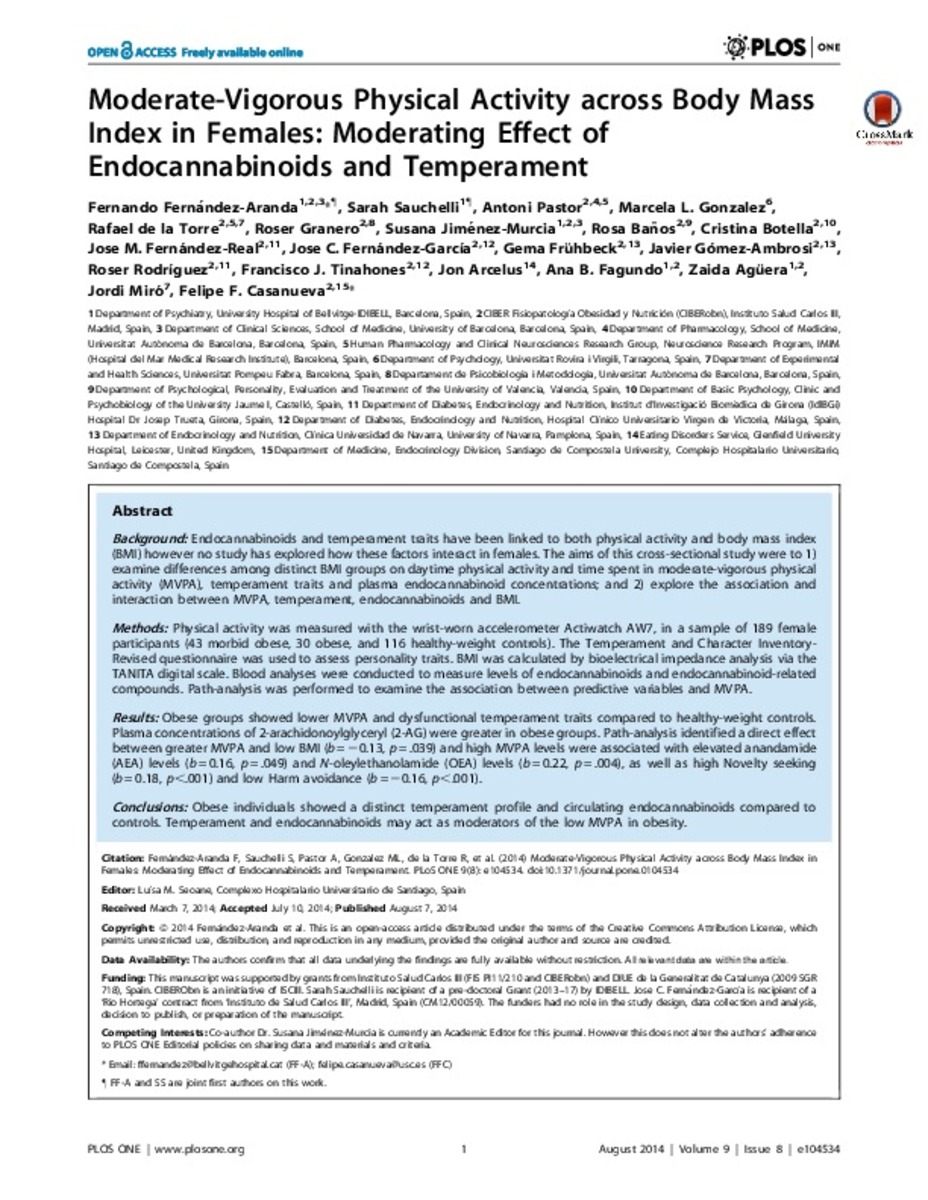Moderate-vigorous physical activity across body mass index in females: moderating effect of endocannabinoids and temperament
Keywords:
Endocannabinoids
Temperament
Body mass index (BMI)
Physical activity
Females
Moderate-vigorous physical activity (MVPA)
Publisher:
Public Library of Science
Citation:
Fernández-Aranda F, Sauchelli S, Pastor A, Gonzalez ML, de la Torre R, Granero R, et al. Moderate-vigorous physical activity across body mass index in females: moderating effect of endocannabinoids and temperament. PLoS One. 2014 Aug 7;9(8):e104534.
Statistics and impact
0 citas en

0 citas en

Items in Dadun are protected by copyright, with all rights reserved, unless otherwise indicated.







